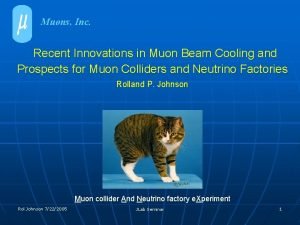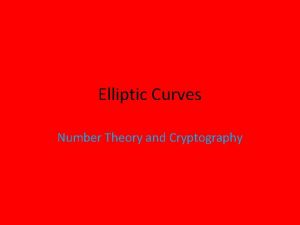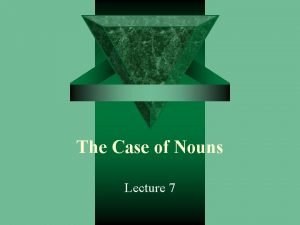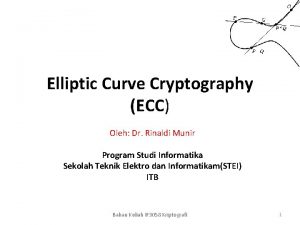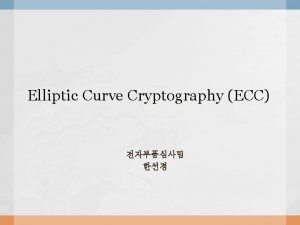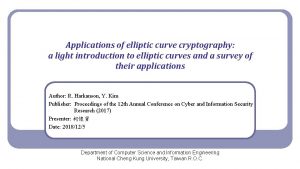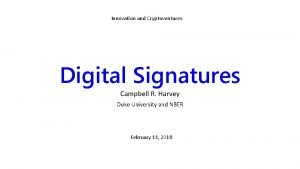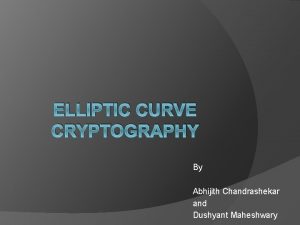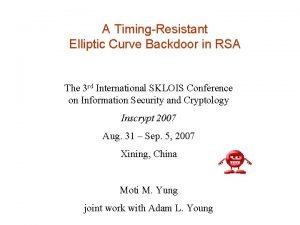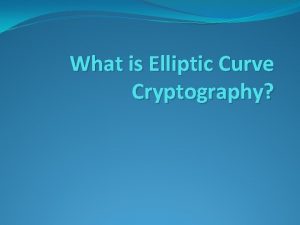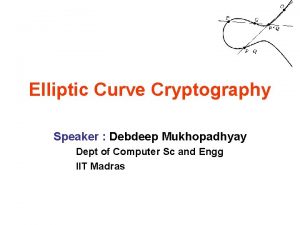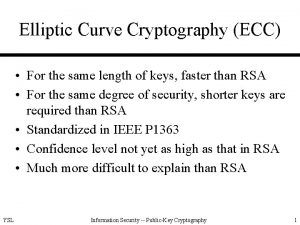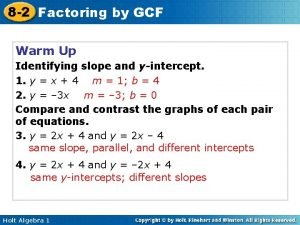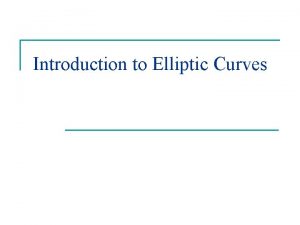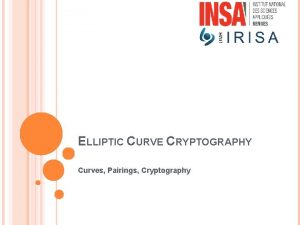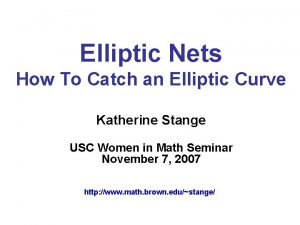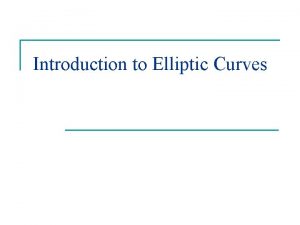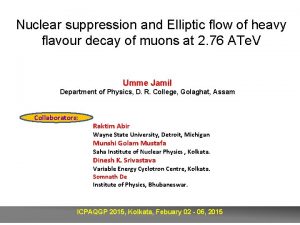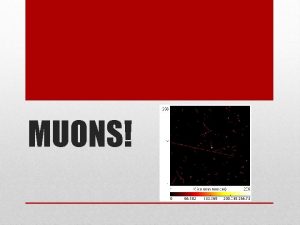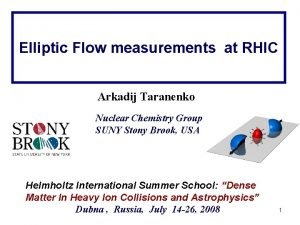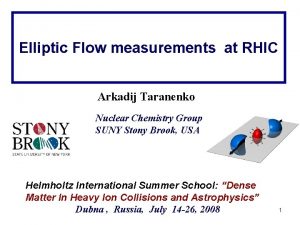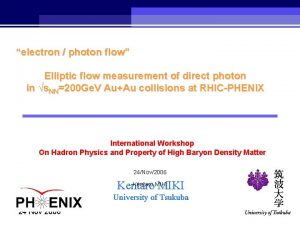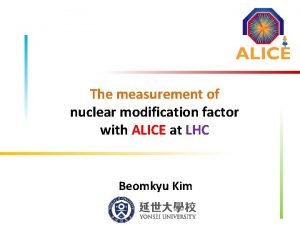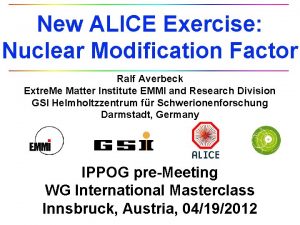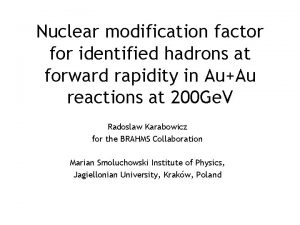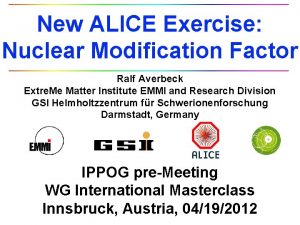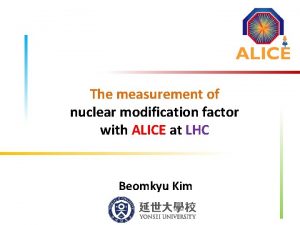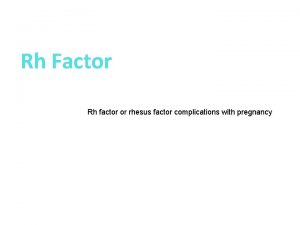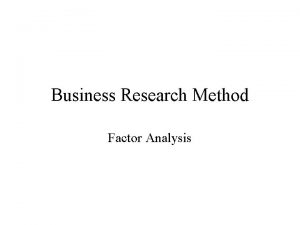Nuclear modification factor and elliptic flow of muons









![The pp reference [Phys. Rev. Lett. 109 (2012) 112301] l The FONLL p. QCD The pp reference [Phys. Rev. Lett. 109 (2012) 112301] l The FONLL p. QCD](https://slidetodoc.com/presentation_image_h/1c84bddc0d06e6e0da77e1962ca39bfd/image-10.jpg)













- Slides: 23

Nuclear modification factor and elliptic flow of muons from heavy-flavour decays in Pb-Pb collisions at √s. NN=2. 76 Te. V with ALICE Shuang Li for the ALICE Collaboration Institute of Particle Physics, CCNU, Wuhan, China Key Laboratory of Quark & Lepton Physics, Mo. E, China Laboratoire de Physique Corpusculaire, CNRS/IN 2 P 3, Clermont-Ferrand, France The 6 th International Conference of Hard and Electromagnetic Probes of High-Energy Nuclear Collisions, Cape Town, South Africa, November 4 -8, 2013 1

Outline l Heavy flavours as probes of the QGP l ALICE setup l Nuclear modification factor and elliptic flow of muons from heavy-flavour decays in Pb-Pb collisions l Summary and outlook 2

Heavy flavours (charm & beauty) as probes of the QGP l Heavy flavours produced in initial hard scatterings & experience the full evolution of the system: sensitivity to medium properties l Heavy flavours in pp collisions ü baseline for p-A and A-A collisions; ü test p. QCD-based calculations. l Heavy flavours in p-A collisions ü investigate cold nuclear matter (CNM) effects: shadowing etc. 3

ALICE setup Time-Projection Chamber (TPC) l |η|<0. 9; Inner Tracking System (ITS) l |η|<0. 9; l vertex reconstruction; l Event trigger. Front absorber l charged track reconstruction; l particle identification; l event plane for muon flow analysis. Dipole magnet μ VZERO l 2. 8<η<5. 1, -3. 7<η<-1. 7; l centrality determination; l event plane reconstruction; Trigger chambers Tracking chambers Muon Spectrometer -4<η<-2. 5 4

RAA of muons from heavy-flavour decays 5

Data sample and muon selection l Data sample ü pp collisions at √s=2. 76 Te. V collected in 2011, muon trigger, Lint=19 nb-1; ü Pb–Pb collisions collected in 2010, minimum bias trigger, Lint=2. 7 μb-1. μ from heavy flavours μ from primary K/π (i. e. decay μ) μ from secondary K/π punch through hadrons 6

Decay muon subtraction in p-p collisions l Strategy ü extract d. N/dp. T of K/π decay muons from simulation (PYTHIA or Phojet); ü normalize to measured muon yield at low p. T; ü subtract from inclusive d. N/dp. T to obtain heavy-flavour decay muon spectrum; ü estimated fraction of decay muons: 19% of total muon yield for p. T > 4 Ge. V/c. l Systematic uncertainty ü model (13%): estimated by using different inputs (PYTHIA and Phojet); ü transport code (5 -20%, depending on p. T): estimated by varying yield of muons from secondary K/π by 100%. 7

Decay muon subtraction in Pb-Pb collisions 8

Efficiency correction l in pp collisions: ü efficiency from simulation using beauty (charm) signals from NLO p. QCD predictions as inputs (negligible difference between efficiencies of charm and beauty decay muons); ü systematic uncertainty on misalignment 1%×p. T (in Ge. V/c). l in Pb-Pb collisions: ü the centrality dependence of tracking efficiency is estimated via embedding procedure; ü efficiency decreases by 4± 1% in the 10% most central collisions w. r. t. peripheral collisions. 9
![The pp reference Phys Rev Lett 109 2012 112301 l The FONLL p QCD The pp reference [Phys. Rev. Lett. 109 (2012) 112301] l The FONLL p. QCD](https://slidetodoc.com/presentation_image_h/1c84bddc0d06e6e0da77e1962ca39bfd/image-10.jpg)
The pp reference [Phys. Rev. Lett. 109 (2012) 112301] l The FONLL p. QCD calculations are in agreement with data within experimental and theoretical uncertainties; [JHEP, 9805 (1998) 007; JHEP 10 (2012) 137] l baseline for the study of heavy quark in-medium effects in Pb-Pb and p-Pb collisions. 10

RAA of muons from heavy-flavour decays at forward rapidity l suppression of HF decay muon yield observed in the measured p. T interval (4<p. T <10 Ge. V/c); l RAA independent of p. T within the measured momentum range; . l stronger suppression in central than in peripheral collisions, reaching a factor of about 3 -4 in the 10% most central collisions; l RAA of heavy-flavour decay muons at forward rapidity (2. 5<y<4) is compatible with that of heavyflavour decay electrons at mid-rapidity (|y|<0. 6). 11

RAA of muons from heavy-flavour decays at forward rapidity l The suppression of heavy-flavour decay muons in the high p. T range at forward rapidity exhibits a strong increase with increasing centrality; l according to FONLL calculations in pp collisions, beauty hadron decays are the dominant source of heavy-flavour decay muons in 6<p. T<10 Ge. V/c. 12

Elliptic flow of muons from heavy-flavour decays 13

Data sample and analysis strategy l Data sample: data collected in 2011, central and semi-central events ü central trigger, 0 -10%, 8. 7× 106 events; ü semi-central trigger, 10 -40%, 8. 0× 106 events. l Particle Selection: ü particles of interest (POI), p muon tracks at forward rapidity, -4<η<-2. 5; p same selection criteria as used in RAA analysis; ü reference particles (RP): measured in TPC and provide reference for muon flow analysis, p p charged tracks measured at mid-rapidity, |η|<0. 8; various selection and acceptance cuts are used to estimate the uncertainty on reference flow. l Analysis methods: ü two particle correlation methods: scalar product (SP) with |Δη|>1; 2 nd order Q-cumulant (QC 2); ü multi-particle correlation methods: 4 th order Q-cumulant (QC 4); Lee-Yang-Zeros (LYZ) with sum and product generating functions. 14

Inclusive muon v 2 l results from QC 4 are systematically lower than those from two-particle correlation methods (SP and QC 2) ü due to different contributions of non-flow correlations and flow fluctuations. l 4 -particle Q-cumulants give same v 2 as Lee-Yang zeroes within uncertainties ü indication that non-flow effects are suppressed with 4 -particle Q-cumulants; l smaller v 2 values with multi-particle flow methods than with two-particle methods is an indication 15 of flow fluctuation effects.

Background flow estimation l Decay muon v 2 estimation: ü parameterize the p. T and η dependence of charged hadron v 2 measured by ATLAS and extrapolate to forward rapidity [ATLAS: Phys. Lett. B 707 (2012) 330]; ü charged hadron v 2(p. T) extrapolated to forward rapidity used as input v 2 of pions and kaons, separately, and produce the v 2 of decay muons in the acceptance of ALICE muon spectrometer via the same fast simulation strategy as in RAA analysis. systematic uncertainty on decay muons v 2 input v 2 bias ~ 9% extrapolation 9%-12% input data fluctuations 13%-15% (at high p. T) K/π weights <1% l Decay muon fraction with the same method used for RAA analysis: ü 15% at p. T = 3 Ge. V/c, 5% at p. T = 10 Ge. V/c. 16

Elliptic flow of muons from heavy-flavour decays: 2 -particle cumulants l p. T-differential v 2 of muons from heavy-flavour decays measured in 3 < p. T < 10 Ge. V/c; l clear increase of v 2 from central to semi-central collisions, in centrality range 0 -40%; l observation of a positive v 2 in semi-central collisions at intermediate p. T with a 3 significance when combining statistical and systematic uncertainties. 17

Comparison with v 2 of heavy-flavour decay electrons l v 2 of heavy-flavour decay muons at forward rapidity (2. 5<η<4) is compatible with that of heavy-flavour decay electrons at mid-rapidity (|η|<0. 7) within uncertainties. 18

p. T-differential RAA & v 2 of muons from heavyflavour decays: model comparisons l theoretical models of RAA: EPS 09 shad. , JHEP, 0904: 065 (2009); Vitev rad. +dissoc, Phys. Lett. . B 713: (2013) 224; BAMPS, J. Phys. G 38: (2011) 124152; BDMPS+ASW rad. , Phys. Rev. D 71: (2005) 054027 l theoretical models of v 2: BAMPS, Phys. Lett. , B 717: (2012) 430; Rapp et al, ar. Xiv: 1208. 0256; l EPS 09 predictions indicate that shadowing effects are expected to be small; l simultaneous reproduction of RAA and v 2 is a challenge for theoretical models (more in D. Caffarri and A. Rossi talks). 19

Summary and outlook l RAA of muons from heavy-flavour decays measured as a function of p. T and centrality: ü strong suppression of high p. T muons from heavy-flavour decays is observed in central collisions; ü no significant dependence on p. T in 4<p. T<10 Ge. V/c; ü the ongoing analysis of the p-Pb run should allow us to quantify initial state effects at forward and backward rapidity. l v 2 of muons from heavy-flavour decays measured as a function of p. T and centrality : ü v 2 in 20 -40% centrality class is larger than that in the most central collisions; ü observation of a positive v 2 (3σ effect) in semi-central collisions; ü suggest that c (and b) quarks suffer significant re-scatterings in the medium and inherit the azimuthal anisotropy produced by the collective expansion of the fireball. 20

Backup

Standard 2010 TPC standalone track cuts 21

p. T-differential v 2 of Muons From Heavy-flavour Decays: model comparisons 0 -10% 22
 Icoolblue
Icoolblue Elliptic curves number theory and cryptography
Elliptic curves number theory and cryptography Lesson 15 nuclear quest nuclear reactions
Lesson 15 nuclear quest nuclear reactions Fisión nuclear vs fision nuclear
Fisión nuclear vs fision nuclear Elliptic genitive
Elliptic genitive Elliptic curve discrete logarithm problem
Elliptic curve discrete logarithm problem Motivationsbasis
Motivationsbasis Elliptic curve cryptography applications
Elliptic curve cryptography applications Elliptic curve cryptography
Elliptic curve cryptography Ecpvs
Ecpvs Elliptic curve backdoor
Elliptic curve backdoor Ecdlp
Ecdlp Lieberman
Lieberman Elliptic curve diffie hellman example
Elliptic curve diffie hellman example Cryptography
Cryptography Form factor and crest factor
Form factor and crest factor Find the greatest common factor of 24 and 36
Find the greatest common factor of 24 and 36 Transform flow and transaction flow in software engineering
Transform flow and transaction flow in software engineering Transform flow and transaction flow
Transform flow and transaction flow Differentiate rotational and irrotational flow
Differentiate rotational and irrotational flow Internal vs external flow
Internal vs external flow Control flow and data flow computers
Control flow and data flow computers Obstruction type flow meter
Obstruction type flow meter Factor the expression examples
Factor the expression examples
